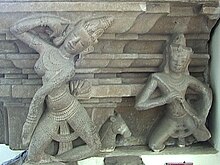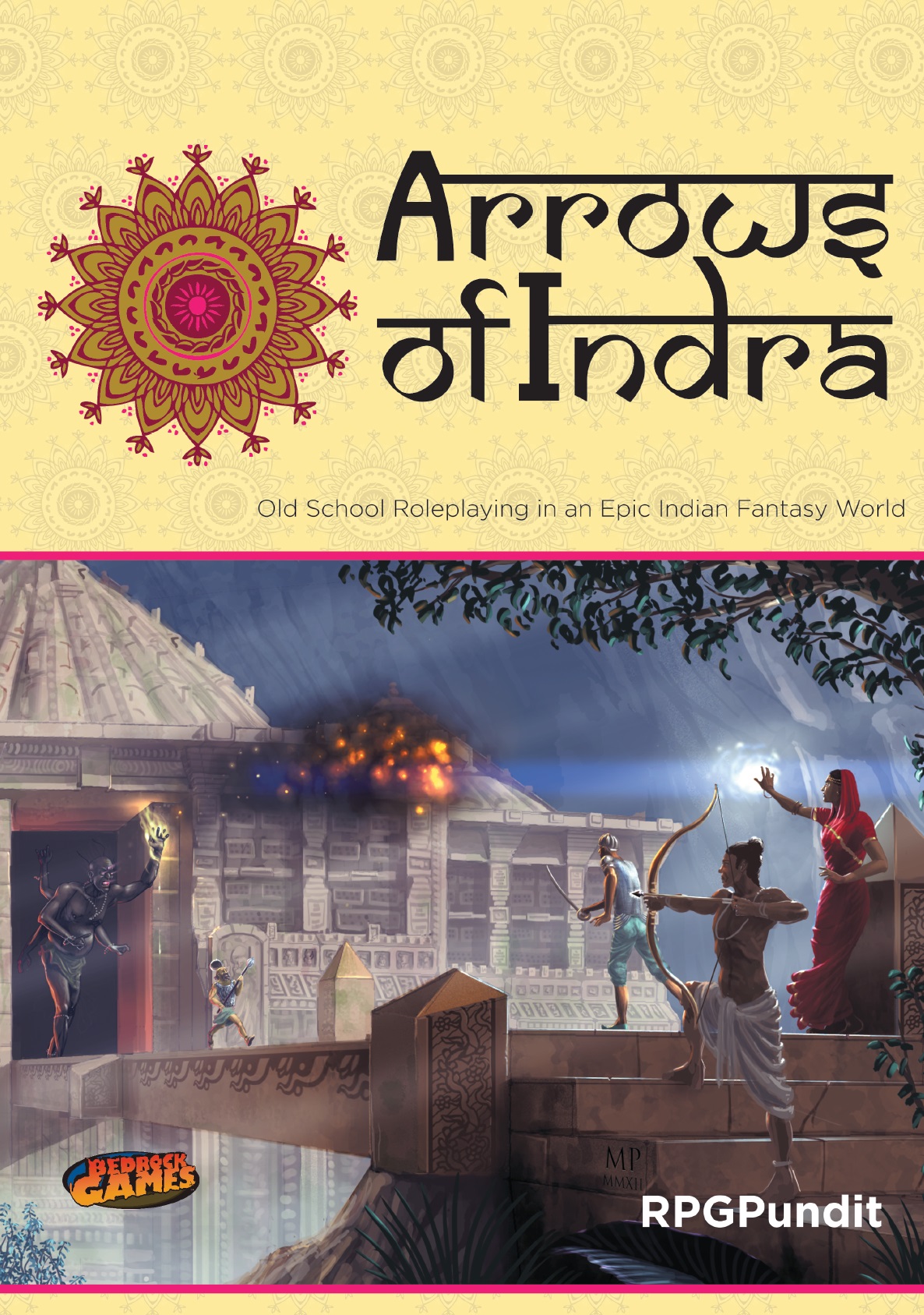Gandharvas in Arrows of Indra are a PC race, and as some have pointed out (sometimes as a criticism) they are presented in AoI as a clear equivalent to the niche of the "Elf" in AD&D.
Now, I went a very conservative route with demi-humans; I'll note that everything I wrote about Gandharvas is accurate to Indian Mythology; but Indian Mythology is huge, and I had to in each instance (with each monster or race) choose one particular presentation out of many, many possible presentations; and I intentionally chose the one that would be most approachable to D&D players.
Now, I went a very conservative route with demi-humans; I'll note that everything I wrote about Gandharvas is accurate to Indian Mythology; but Indian Mythology is huge, and I had to in each instance (with each monster or race) choose one particular presentation out of many, many possible presentations; and I intentionally chose the one that would be most approachable to D&D players.
Gandharvas in Indian mythology can be tall thin musically-inclined immortals with birdlike features. But it would also be in following with Indian mythology if they had horse-like features instead, or a mix of both.
Its universal in almost all depictions of Gandharvas that they are skilled musicians for the gods. In some representations, they can fly through the air. In many versions, Gandharvas are exclusively male, and they mate with the exclusively female air-spirits called Apsaras.
In the celestial realms, the Gandharvas are the musicians in the courts of the Gods. They are found in the realm of Indra and of Shiva in particular.
On the world of Jagat, Gandharvas would be quite a rare sight in any of the Bharata kingdoms. They'd be the source of enormous curiosity but also of tremendous respect. Everyone knows they are Holy servants of the gods, and they would by default be treated with the same respect as a Brahmin-caste human. Of course, there would be some of the same expectations of behaviour from them; though humans would also realize that the Gandharvas do not need to follow all the same rules and taboos as human Brahmins do.
There are Gandharva kingdoms in Jagat, in the Kailash mountains (bordering the kingdoms of the Yaksha king Kubera; unlike many settings' treatments of elves and dwarves, Gandharvas and Yakshas have quite good relations with one another); and also in Dwaita Jungle.
The cities of the Gandharvas should be astounding and mystical places; not treehouse-homes like you'd expect from wood elves or the likes, but rather astounding cities with sophisticated architecture and incredible beauty. The Gandharva cities are powered by energy, with artificial lights, running water and other sophisticated wonders; I intentionally left it vague as to whether this "technology" is actually some kind of advanced science or some wondrous magic, but what is clear is that their energy sources are powered by gold; and Gandharvas use gold as an energy source rather than as a means of currency. There's some significant potential for adventuring ideas right there, both for Gandharvas or potentially for ambitious characters looking to steal from the immense storehouses of Gandharva gold.
Anyways, the point is that you can make of Gandharvas what you want in Arrows of Indra, like any other part of the game. If you want your Gandharvas to just be a substitute for elves, go for it. There's no problem with that.
If you want them to be something far more unusual, there's a lot that can be done with that too.
RPGPundit
(Originally posted September 20, 2013)
Currently Smoking: Ben Wade Rhodesian + Image Latakia



I'm amazed at your skill of extracting Vedic myths and adjusting for games. Just curious (as purchasing your AoI book is still a future priority for me), if these little essays are excerpts from your book, or newer studies not yet included?
ReplyDeleteThese aren't literally excerpts, they're explanations of material in the book, paraphrasing material explained in the book about these races. Mainly to help people who didn't yet buy the book, but might have heard some misinformation about it, to understand how the demihumans in AoI are not just like "elves and dwarves in indian-costume" but are actually based on similar but divergent root-legends from actual Indian culture.
Delete